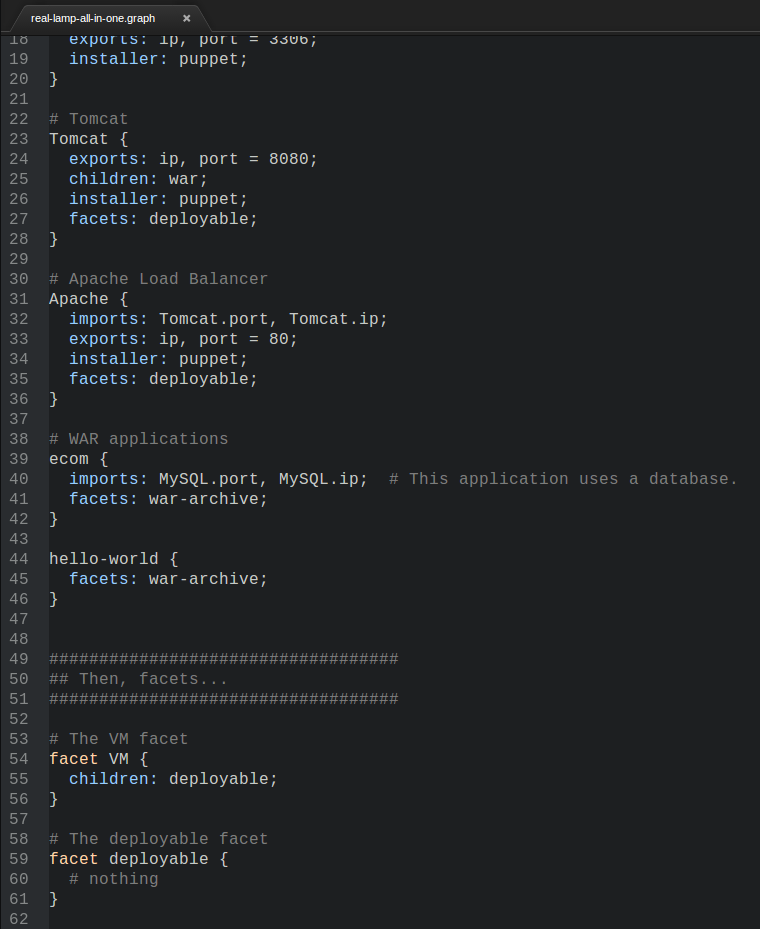Editors
Roboconf’s configuration files use a custom notation.
This notation is inspired from CSS. The main difference relies in the key words
and in the comment delimiters (there is only a in-line comment delimiter, the sharp ‘#’
character).
This make these configuration files very easy to read and to modify within any text editor.
Notepad ++
For those who use Notepad ++, a configuration file has been written for the Roboconf syntax.
It brings syntax highlighting in the editor. You can download it here.
Follow these instructions to install it in Notepad ++.
Atom.io
There is an Atom package for Roboconf’s DSL.
It provides syntax highlighting and snippets for the Roboconf configuration files (graph and instances).
You can find information on Atom’s web site.
Here is a screenshot with the dark theme.

IDE
The value of such edition tools resides in syntax highlighting, auto-completion and contextual help (such as validation markers or quick fix).
For the moment, only Eclipse tooling has been created.
You can find more information about the Eclipse plug-in here.
Since Roboconf’s parsing and model library is an independent Java library, it is possible to reuse the validation code and model classes in other IDE (such as Netbeans).
HTML Pages
If you want to embed snippets of Roboconf’s DSL in HTML pages, we have added Roboconf
support to Highlight JS.
Just add the right JS and CSS links in your HTML page and wrap your code as follows.
<pre><code class="roboconf" data-trim>
# Your snippet of Roboconf's DSL
</code></pre>
This is what is used for syntax highlighting in the online presentations.